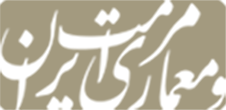

BibTeX | RIS | EndNote | Medlars | ProCite | Reference Manager | RefWorks
Send citation to:
URL: http://mmi.aui.ac.ir/article-1-376-en.html
2- Art University of Isfahan
Three-dimensional tools are widely used for various purposes, particularly Three- dimensional printers which play a great role in simplification and acceleration of phases in production process for various fields ranging from medicine to industry.
Due to the problems related to the reconstruction of missing parts in restoration of historic glass objects in the methods of molding, casting and formation of reconstructed parts, the present research, aiming to propose an efficient method within this process has suggested 3D printer as a tool with the least intervention and destruction and also high accuracy and as a substitute to the current methods. Research questions are as follows: How is the condition of 3D reconstruction facilities for missing parts of glass objects in Iran? What are the technical and practical advantages and disadvantages of 3D printer in this process? How is the strength and yellowing quality of suggested polymers for reconstruction?
The research finalized through verifying both current and 3D technology methods for reconstruction of missing parts. The compared methods include: filling with Epoxy and also Acrylic resin, Plexiglas and PETE methods as suggestions. Samples were tested for yellowing and Pin on disk. The results showed that Acrylic resin in 3D printer is a proper substitute for reconstruction of the missing parts of glass objects, and Plexiglas using 3D technology method (laser and CNC) is also ranked as the second.
| Rights and permissions | |
 |
This work is licensed under a Creative Commons Attribution-NonCommercial 4.0 International License. |



